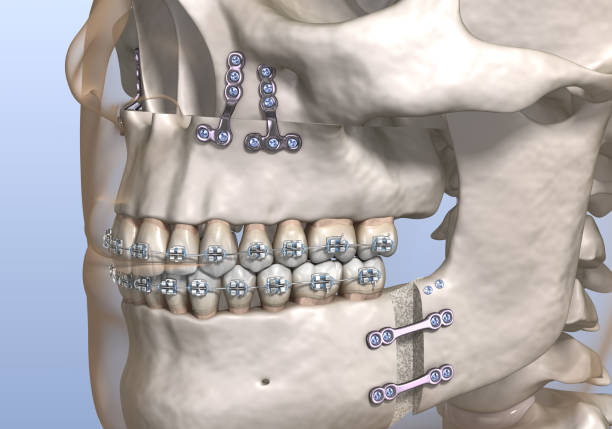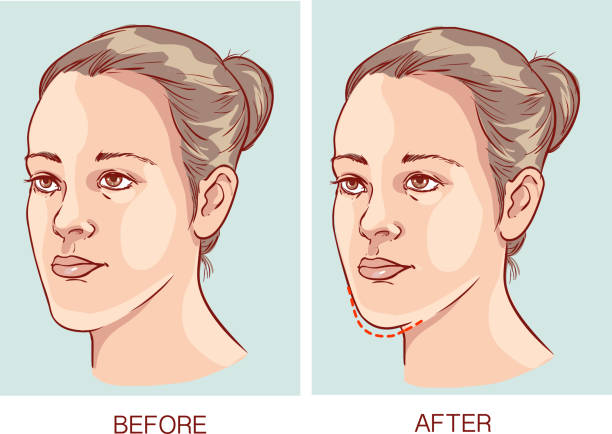Orthognathic surgery also known as corrective jaw surgery or simply jaw surgery, is surgery designed to correct conditions of the jaw and lower face related to structure, growth, airway issues including sleep apnea, TMJ disorders, malocclusionproblems primarily arising from skeletal disharmonies, other orthodontic dental bite problems that cannot be easily treated with braces, as well as the broad range of facial imbalances, disharmonies, asymmetries and malproportions where correction can be considered to improve facial aesthetics and self-esteem.
Jaw surgery may help to:
- Make biting and chewing easier and improve chewing overall.
- Correct problems with swallowing or speech.
- Minimize excessive wear and breakdown of the teeth.
- Correct bite fit or jaw closure issues, such as when the molars touch but the front teeth don’t touch (open bite).
- Correct facial imbalance (asymmetry), such as small chins, underbites, overbites and crossbites.
- Improve the ability of the lips to fully close comfortably.
- Relieve pain caused by temporomandibular joint (TMJ) disorder and other jaw problems.
- Repair facial injury or birth defects.
- Provide relief for obstructive sleep apnea.
Surgical procedures
- Maxillary advancement In patients with receeded upper jaw (midface), crossbite, openbite, reduced dental show this procedure is done by the surgeon, where he seperates the upper jaw via bone cuts and can move it as one whole unit. It is then moved to the desired position and fixed using mini plates.
- Mandibular advancement or Set back This procedure is performed for patients with severely receding lower jaw or extremely prognathic lower jaw. Here the surgeon makes bone cuts in the mandible called as “Sagittal Split Osteotomy” to be able to move the lower jaw in the new desired and pre planned position. The lower jaw is then secured in the new position using mini plates. In this surgery both receding and prognathic jaws can be addressed.
- Genioplasty This procedure is done for patients with a weak chin, generally a strong chin creates an aesthetic facial feature. In patients with a small chin or a chin line that is receding but having a stable occlusion Genioplasty can be performed as it involves only moving the chin to achieve the desired aesthetic look. It also involves using some artificial silicone implants to enhance the jaw line.
- Bimax Surgery This type of surgery involves moving the upper jaw and the lower jaw together to achieve the balance and aesthetic harmony in the face. This type of surgery is best performed with proper planning and meticulous execution.
There are a lot of Orthognathic surgeries available the above mentioned are a few most commonly performed surgeries. Dr Tofiq Bohra is trained in performing these surgeries with patience and skill. He has a state of Art instrument line that helps him to execute these surgeries with confidence and achieve pre planned desired results.
Dr Tarun Sharma is an ardent proponent of meticulous planning and execution. In his treatment protocol for Orthognathic surgery planning using models, skull models, Dental casts for occlusion play an integral part. He first shows his patients the outcome of the surgery by performing a mock surgery on the skull models. Dr Tofiq also uses a few most advanced sotwares to show the patient the final outcome of the surgery before the surgery.



